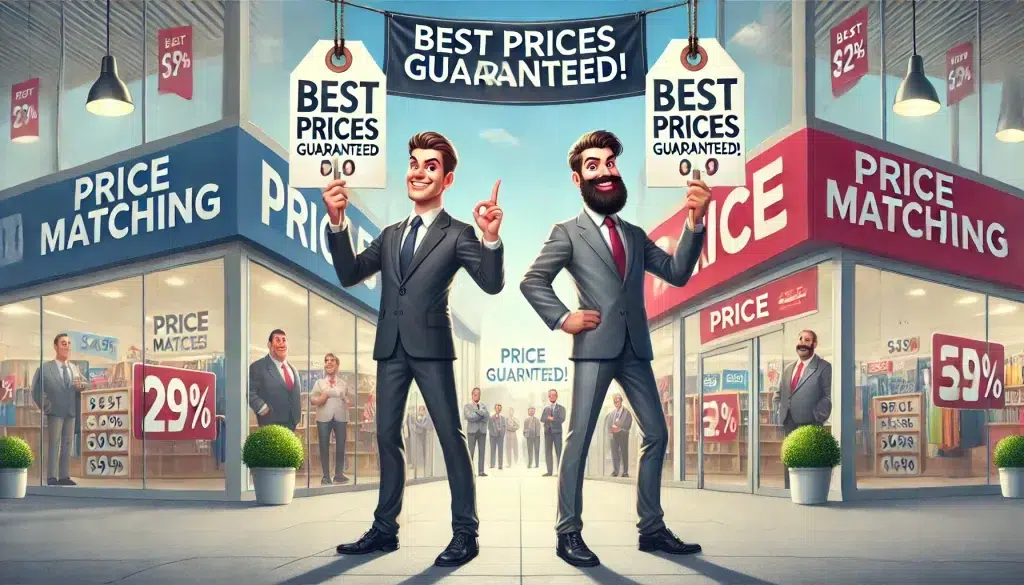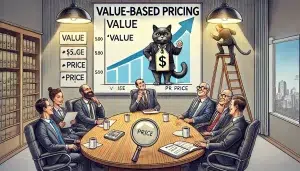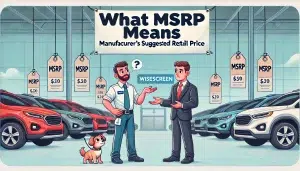
Price matching is a powerful pricing strategy that retailers use to stay competitive, attract price-sensitive customers, and build customer loyalty.
This strategy allows retailers to maintain their competitiveness and appeal to cost-conscious consumers without permanently lowering their prices.
In this comprehensive guide, we’ll explore the ins and outs of price matching, its impact on ecommerce and retail businesses, and how to implement it effectively.
Key Benefits of Price Matching:
- Increased Customer Loyalty: By offering price matching, retailers demonstrate their commitment to providing the best value, encouraging customers to return for future purchases.
- Competitive Edge: Price matching helps retailers stay competitive in crowded markets, ensuring they don’t lose customers to lower-priced competitors.
- Improved Price Perception: Consumers perceive retailers with price matching policies as fair and customer-centric, enhancing their overall brand image.
- Reduced Showrooming: Price matching can discourage customers from browsing in-store and then purchasing online from competitors at lower prices.
Potential Drawbacks of Price Matching:
- Reduced Profit Margins: Matching lower prices can cut into profit margins, especially for retailers with higher operational costs.
- Price Wars: Aggressive price matching can lead to unsustainable price wars among competitors.
- Complexity in Implementation: Monitoring competitors’ prices and verifying customer claims can be time-consuming and resource-intensive.
- Potential for Abuse: Some customers may attempt to exploit price matching policies with fraudulent claims or by comparing to non-equivalent products.
Implementing an Effective Price Matching Strategy:
- Define Clear Policies: Establish transparent guidelines for your price matching policy, including eligible products, competitors, and any limitations.
- Train Staff: Ensure your team understands the policy and can efficiently handle price matching requests.
- Leverage Technology: Utilize price monitoring tools to stay informed about competitors’ pricing in real-time.
- Analyze Data: Regularly review the impact of price matching on sales and profitability to refine your strategy.
- Communicate Clearly: Promote your price matching policy to customers through various channels to increase awareness and drive sales.
FAQs about Price Matching:
- Q: How does price matching work?
A: When a customer finds a lower price for an identical item at a competitor, they can request the retailer to match that price. The retailer will verify the claim and adjust the price accordingly if it meets their policy criteria. - Q: Do all retailers offer price matching?
A: No, not all retailers offer price matching. It’s more common among large retailers and some specialty stores, but policies vary widely. - Q: Can I price match online prices in-store?
A: Many retailers do match online prices, but policies differ. Some may only match prices from specific online competitors or exclude certain types of online deals. - Q: Is price matching the same as a price guarantee?
A: Not necessarily. A price guarantee often refers to matching a lower price found after purchase, while price matching typically applies at the time of purchase. - Q: How long do I have to request a price match after purchase?
A: This varies by retailer. Some offer price protection for a specific period after purchase (e.g., 14 or 30 days), while others only match prices at the time of sale.
For more information on retail pricing strategies and consumer behavior, check out these authoritative resources:
- Harvard Business Review: Pricing Strategy
- Wikipedia: Pricing Strategies
- McKinsey & Company: Retail Insights
In conclusion, price matching can be a powerful tool for retailers to stay competitive and build customer loyalty.
By understanding its benefits and challenges and implementing it strategically, retailers can create a pricing strategy that drives growth and customer satisfaction in today’s dynamic retail landscape.




